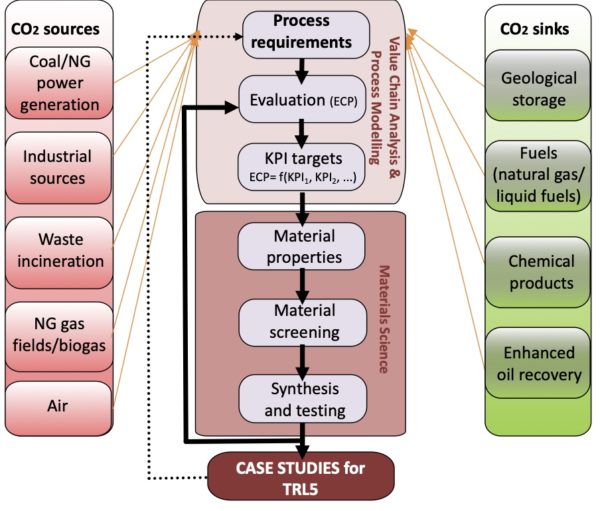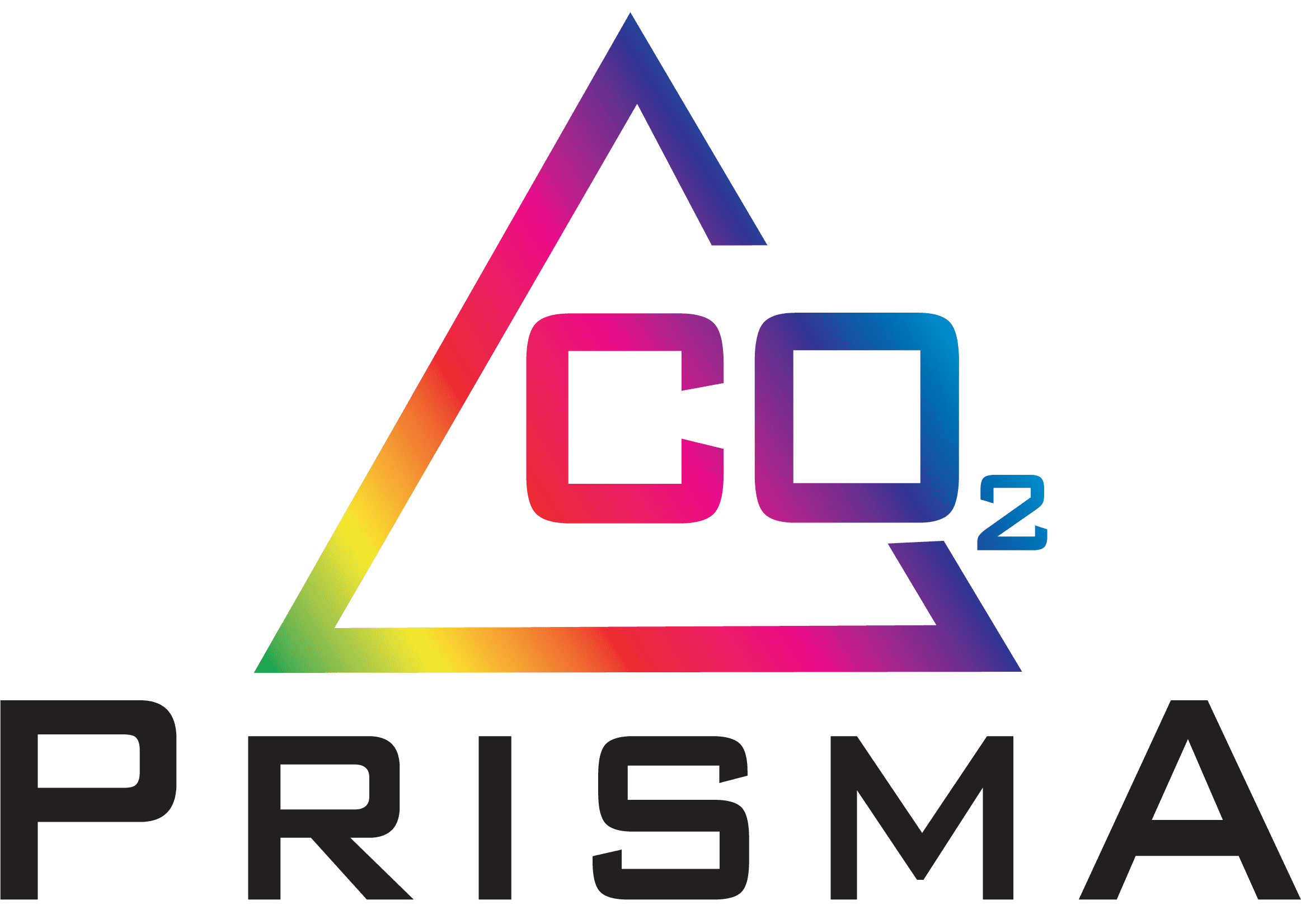The world we envision has a concerted effort to minimize CO2 emissions from any source, either through reuse of emitted CO2 as feedstock for fuel or the chemical industry or permanently preventing the CO2 from escaping into the atmosphere through geological storage. In such an admittedly ideal world one envisions many different sources of CO2 with the economic incentive to optimize a Carbon Capture Utilization and Storage (CCUS) process that is optimally tailored to each local economic situation. The economic viability of each of these solutions is set by an effective price of carbon that sets a breakeven point for each of these processes. The technological challenge is to reduce this effective price of carbon by optimizing capture technologies for many different sources of CO2 and integrating a diverse range of applications for CO2 as a feedstock.
The PrISMa project aims to accelerate the transition of energy and industrial sectors to a low-carbon economy by developing a technology platform to tailor-make cost-efficient carbon capture solutions for a range of different CO2 sources and CO2 use/destinations.
To achieve this goal PrISMa unites the efforts of world-leading research teams from Heriot-Watt University (HWU) in the UK, École Polytechnique Fédérale de Lausanne (EPFL) in Switzerland, Lawrence Berkeley National Laboratory (LBNL) in the USA, and SINTEF Energy Research (SINTEF-ER) in Norway. These teams have the expertise to bridge the gap between molecular sciences (LBNL and EPFL) and process engineering (SINTEF-ER and HWU). The team is supported by market-leading companies and non-governmental organizations, which are committed to minimize CO2 emissions of their industrial sectors and will provide case studies and maximise knowledge exchange and impact of PrISMa.
The PrISMa methodology starts with a high-level analysis, in terms of an effective carbon price, on how the performance of a separation process depends on the source of CO2 and its use/destiny. This analysis is subsequently translated into key performance indicators (KPIs) that novel materials need to achieve in terms of their potential to reduce the effective carbon price in order to compete with state-of-the-art capture processes. A materials genomic approach is used to screen libraries of millions of in silico predicted structures to identify materials that meet the KPIs. The most promising materials will then be synthesized, characterised, and tested for their performance in a carbon capture process. For those materials that yield a significant reduction of the effective carbon price, a roadmap to bring these materials to TRL5 will be developed through case studies.
PrISMa will provide the platform needed for high-throughput screening of materials to maximise their impact, to enable the design of efficient pilot-scale test facilities with improved processes under real conditions and, to decrease the time to market of affordable, cost-competitive, low environmental impact, and resource-efficient advanced capture technologies. Through the integration of materials design and process design we aim to change the paradigm on how novel materials are developed for chemical engineering applications. Our target is to demonstrate that within 6-9 months we can make a reliable statement whether for a given CO2 source and sink novel materials have the potential of reducing the effective carbon price. As a similar approach can be developed for other separations, we expect the impact of PrISMa in terms of the potential to decrease the time to market for novel materials to go beyond carbon capture. In addition, PrISMa aims to initiate a systematic thinking about efficient solutions to mitigate CO2 emissions from different local CO2 sources that are optimal for a specific local setting. In such a setting the impact of PrISMa will be significant as the need for tailor-made solutions will be increasingly important if CO2 mitigation at the local level becomes the norm.
